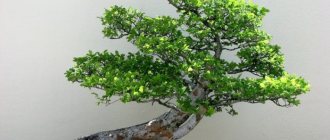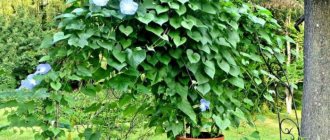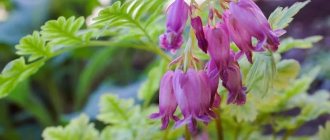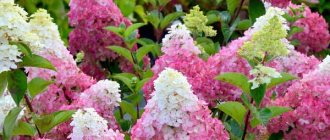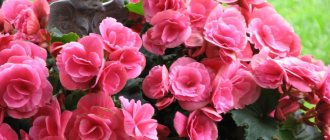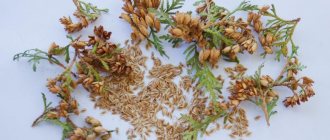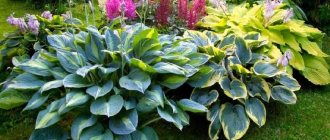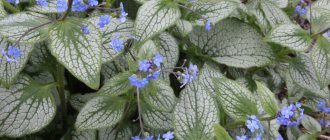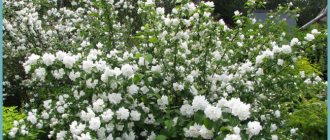Amaryllis belladonna, or Amaryllis belladonna, is a monocotyledonous flowering plant and belongs to the type species of the genus Amaryllis and the Amaryllidaceae family. .The homeland of this heat-loving plant is South Africa.
Flowers of this species, growing in natural conditions, are characterized by the presence of all shades of pink and red, as well as white. Through breeding work, specialists have obtained plants that produce flowers of purple, orange, yellow, greenish color, as well as all kinds of combined options.
Botanical description
Amaryllis belladonna is a bulbous plant. The average diameter of the bulb can vary between 5-10 cm. The plant produces leafless peduncles and green foliage. The length of the leaves is 30-50 cm with a width of 20-30 mm. The foliage is arranged in two rows. Foliage formation in cold climates occurs in early spring.
In the last ten days of summer, the bulb forms one or a pair of bare peduncles, the height of which can reach 30-60 cm. Inflorescences consisting of several funnel-shaped flowers are formed on the peduncles. The flowers are white or pinkish in color, but there are varieties with red and purple flowers. The average diameter of flowers consisting of six petals can vary between 6-10 cm.
Diseases
Most often, belladonna is susceptible to such diseases as:
- Anthracnose . It appears as dark brown spots resembling streaks on the leaves.
- Fusoriasis is root rot. The reason is improper watering and low room temperature.
- Stagonosporosis is redness of the bulbs.
To prevent diseases, planting material is treated with foundationazole or Bordeaux mixture.
We talked about diseases, pests and treatment of amaryllis here.
Amaryllis belladonna flowers are very beautiful, large and have many different shades. In addition, they are quite easy to care for and propagate. This is why the flower is actively used by flower growers to decorate rooms and balconies.
Poisonous flower
Amaryllis belladonna is one of the poisonous plants , and even a small dose of the bulb of this ornamental crop causes a strong gag reflex. A significant dose of the plant is highly toxic. It is important to note that the foliage of this type of amaryllis has a well-known property of relieving cramps and spasms. The highly poisonous plant juice obtained from the plant is quite often used by some natives and tribes to poison arrows when hunting.
Care errors
If you care for amaryllis improperly, all your mistakes will affect the appearance of the plant:
- Pale leaves indicate rotting roots. We will have to urgently transplant the bulb into new soil.
- Yellowing indicates excessively wet soil.
- Red spots are caused by overwatering. Use Bordeaux mixture.
Amaryllis does not bloom
If you can't get your fire lily to bloom, you may not be following proper plant care practices. Make sure you did everything correctly. Maybe:
- lack of nutrients;
- pot too wide;
- amaryllis is sick;
- suffers from pests.
Eliminate all misunderstandings, and soon the flower will thank you by throwing out arrows.
Photo gallery
Amaryllis toxicity
Amaryllis are not only beautiful. They can pose a danger to caregivers and pets.
Amaryllis bulbs, its leaves and stems contain toxic compounds, including amaryllidine, phenanthridine, lycorine and other alkaloids, when ingested, a person experiences:
- gagging;
- decreased blood pressure;
- respiratory depression;
- intestinal discomfort;
- lethargy;
- increased salivation.
The concentration of toxic substances is low. Therefore, the plant is only slightly dangerous for an adult, but amaryllis is poisonous for children and pets. At the first signs of ill health and suspicion that a bulb or green plant has entered the intestinal tract, you should consult a doctor.
A serious stage of poisoning threatens respiratory arrest and negative effects on the nervous system. More often, this problem affects livestock, such as goats and cows, grazing near flower beds.
The toxicity of amaryllis also affects those who suffer from contact dermatitis. The plant sap can irritate the skin, so it is safer to work with gloves.
Landing rules
Amaryllis are very heat-loving plants and do not tolerate winter quite well in open ground conditions. In home gardening, the cultivation of this ornamental crop is allowed only in regions with fairly mild climatic conditions.
When growing indoors, preference should be given to the following popular and highly decorative, but unpretentious varieties:
- large-flowered variety “Major” with pink petals;
- variety with relatively small light pink flowers “Minor”;
- variety with medium-sized flowers and bright pink color “Elata”;
- variety "Purpurea", which has purple-red flowers with a white or whitish-yellow throat;
- white-flowered and non-fragrant variety "Alba".
Planting amaryllis belladonna is most often carried out with daughter bulbs - children or divisions , which can be obtained by transplanting greasy adult plants. Separation of children from an adult plant and division is carried out when the above-ground part has completely dried out. Young plants enter the flowering phase in the second or third year. Seed propagation is quite labor-intensive and allows you to obtain an adult flowering plant no earlier than in five years.
Flowering and dormancy
Belladonna blooms in late summer - early autumn for 2-3 weeks. Flowering occurs once a year.
Before flowering, amaryllis produces a peduncle on which 6 to 12 flowers appear. After pollination, seed pods appear on the flowers, which begin to ripen after the flower falls. Also, after the flowers fall, leaves appear and only after they die off does a period of rest begin.
As long as at least one amaryllis leaf is alive, the dormant period has not begun and the process of flowering continues as usual.
Possible reasons for lack of flowering:
- Unripe or small bulbs.
- Insufficient rest period, the flower did not have time to regain its strength.
- The temperature is too high or too low.
- The room is too dark.
- Poor soil, lack of microelements in it.
- A young bulb produces a peduncle. Only a mature bulb, at least 2-3 years old.
You can find out why amaryllis doesn't bloom and how to make it produce buds here.
Features of growing at home
When creating optimal growing conditions for an ornamental crop, the plant retains its visual appeal year-round and allows the amateur gardener to enjoy lush flowering:
- at the stage of active growth, the flower pot with the plant should be placed on windows facing the southwest or southeast;
- when the plant is located on a south window, the ornamental crop will require shading from direct sunlight, which will protect the foliage from turning pale and fading;
- at the dormant stage, the plant does not require lighting, and the flower pot should be placed in a dark and cool place with a constant temperature and good ventilation;
- during the period of activation of growth processes, decorative crops need to be provided with lighting for 14–16 hours in the form of bright but diffused light;
- amaryllis foliage and flower stalks stretch towards the sun, and the flower pot must be periodically turned towards the light;
- amaryllis belong to the moisture-loving category, and for irrigation activities, settled water at room temperature should be used;
- the soil in the flower pot should not dry out too much, but excessive soil moisture can quickly destroy the plant;
- at the stage of active flowering, irrigation measures should be made more frequent and abundant, and before flowering it is recommended to lightly moisten the buds;
- at the dormant stage, watering should be completely eliminated and replaced by spraying the soil in the flower pot;
- The optimal humidity levels in the winter storage area for ornamental crops should be approximately 65%.
When grown under indoor floriculture conditions in summer, it is necessary to maintain the temperature during the day at 22-24ºС and about 18-19ºС at night. In winter, the temperature should remain stably within 10-12ºС.
How to distinguish belladonna species
This confusion between amaryllis and hippeastrum did not begin today, but a long time ago, about two hundred years ago. And it is not the flower growers who are to blame for it, but, as always, the botanists, who only by the year nineteen sixty-three finished their scientific debate about who is who, and finally came to a general agreement, finally deciding to what genus these two beautiful plants should be classified. It is not surprising that there are still many errors in the literature. And many amateur flower growers are sure that they are growing amaryllis, while they have a completely different representative of this family growing.
Amaryllis belladonna species
So what is the difference between two related plants. Firstly, both cultures have different areas of origin. Amaryllis is a typical representative of the grassy savanna of South Africa, and the ancestors of the hybrid hippeastrum come from the subtropical forests and rocky mountains of Central and South America.
Secondly, the genus amaryllis is monotypic. In other words, the genus is represented in nature by one single species, Amaryllis bella-donna, which has typically pink, bell-shaped flowers. It is endemic to the Cape Province and does not grow naturally anywhere else in the world. By the beginning of this century, breeders had developed a very small number of garden forms and varieties based on it. They differ in height, size and shape of the corolla of the flower and its color.
Outdoor cultivation
In home gardening, amaryllis belladonna grows quite well even in the middle zone with moderate soil and climatic factors when creating the most comfortable conditions:
- the place for planting and growing the crop should be sufficiently sunny or with slight shading;
- the area for cultivation should be represented by fertile, well-drained soil;
- completely healthy and high-quality bulbs should be planted with a depth of 20-25 cm in pre-prepared planting holes with a drainage layer;
- a sufficiently high and well-developed neck of the bulb should not rise above the ground level during planting;
- It is recommended to plant adult plants every four years, immediately after the foliage withers or after flowering;
- in late autumn, the plant should be prepared for winter frosts, and it is recommended to use dry leaves, pine litter or peat chips, the layer of which should be approximately 10-15 cm, as cover.
The peduncles and foliage of amaryllis are not hollow, but rather dense and strong, so during the growing process the ornamental crop will not require support or tying.
Reproduction
Daughter bulbs
Reproduction by daughter bulbs is the simplest and most accessible method, which involves the following steps:
- Reproduction occurs during transplantation if there are children on the bulb.
- The baby is carefully cut off from the mother bulb with a sharp knife. The knife should be treated with alcohol before the procedure.
- Only smooth, strong and healthy baby bulbs with good, healthy roots should be planted.
- Before planting, dead scales are removed from the young bulb and placed in a saturated solution of potassium permanganate for 30-40 minutes, after which the planting material is dried for 12-14 hours.
- After this, the bulb is planted in a caught pot, buried 2/3 into the soil and carefully watered.
With good care, the young plant will bloom in 2-3 years.
Seeds
The first thing to do is get the seeds from the flower. They ripen within a month, after which they should be planted immediately to avoid overripening.
Sowing procedure:
- Ripe seeds are poured into prepared moist soil and placed in a dark and warm place.
- The bud with crops is regularly sprayed generously from a spray bottle.
- After the entrances appear, the container can be moved to a brighter place and wait until the plants grow a little and get stronger.
- When the plants are 5-7 cm tall, I plant them in separate pots and water them as usual.
Amaryllis is not only grown at home and on the streets, but bouquets are often made with it, which you can learn more about on our website.
